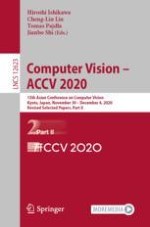The six volume set of LNCS 12622-12627 constitutes the proceedings of the 15th Asian Conference on Computer Vision, ACCV 2020, held in Kyoto, Japan, in November/ December 2020.*
The total of 254 contributions was carefully reviewed and selected from 768 submissions during two rounds of reviewing and improvement. The papers focus on the following topics:
Part I: 3D computer vision; segmentation and grouping
Part II: low-level vision, image processing; motion and tracking
Part III: recognition and detection; optimization, statistical methods, and learning; robot vision
Part IV: deep learning for computer vision, generative models for computer vision
Part V: face, pose, action, and gesture; video analysis and event recognition; biomedical image analysis
Part VI: applications of computer vision; vision for X; datasets and performance analysis
*The conference was held virtually.
